In Photos: Ancient Gladiator School Discovered, Recreated
Gladiator school
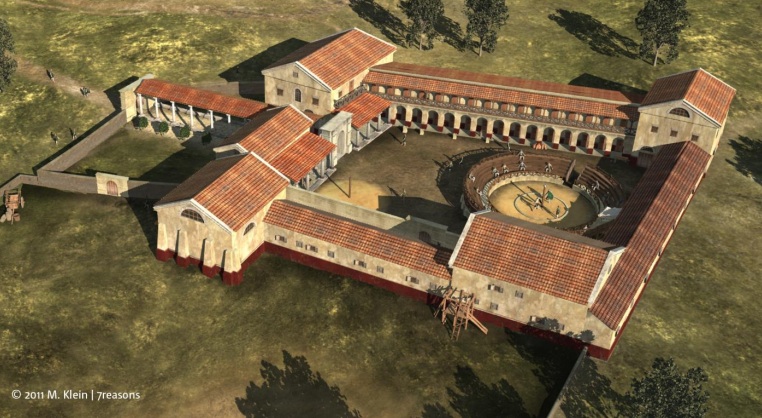
An ancient Roman gladiator school has been discovered in Austria, complete with cell blocks, a training arena and a bath complex, archaeologists say. The buried remains of the school — at the site of Carnuntum, near Vienna — were detected not through excavations but through remote-sensing techniques. Based on these findings, researchers reconstructed the gladiator center in virtual 3D models. [Read full story]
Footprint of gladiators
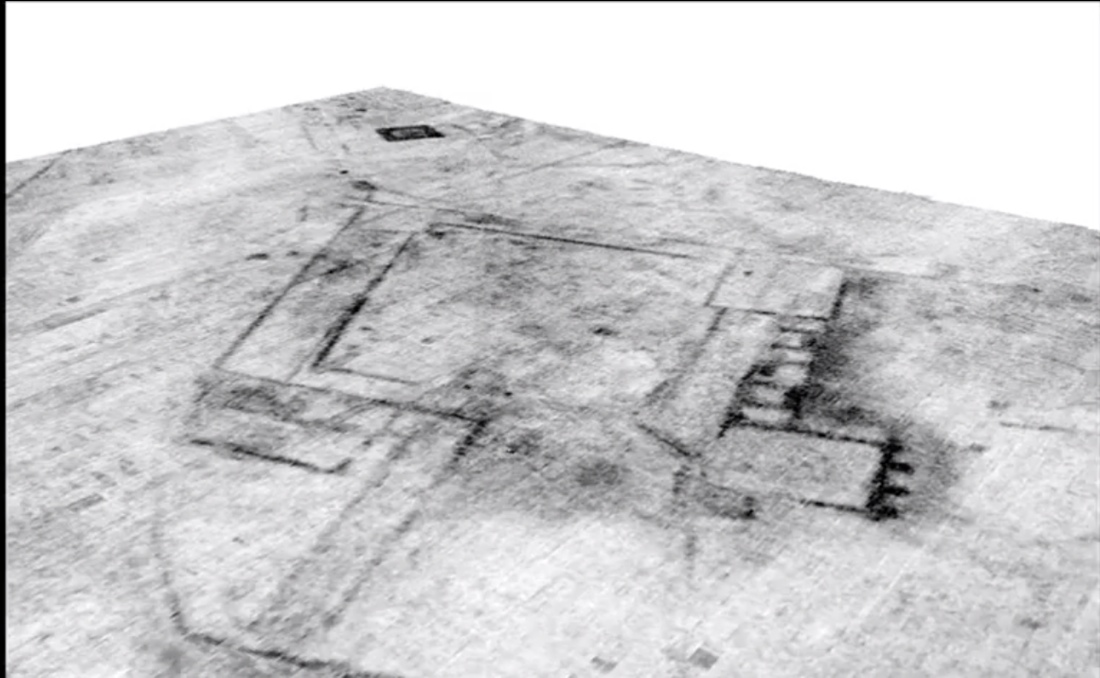
Radargrams visualized as horizontal depth-slices produced from ground-penetrating radar data reveal the ancient gladiator school/courtyard. Within the courtyard a circular structure can be seen (62 feet, or 19 meters, in diameter) interpreted as the training arena of the gladiators.
Amphitheater

This magnetogram shows the western area around the municipal amphitheater, revealing the remains of the ancient gladiatorial school and its surroundings. The prominent winding linear feature indicates a ditch dug for the installation of an aqueduct. As the building complex clearly respects this ditch, it is assumed to predate the construction of the gladiatorial school. An extended refuse dump obvious in the magnetic and radar data at the southern corner of the building proves that the ditch in Roman times was a distinct depression separating the gladiatorial school from the surrounding area of the amphitheater.
Carnuntum

In this image of the civilian town of Carnuntum, the amphitheater and remains of the gladiator school are visible. To the north the street system and the main fortification of the municipium show up as faint vegetation marks in the grassland.
Archaeologist's toolbox
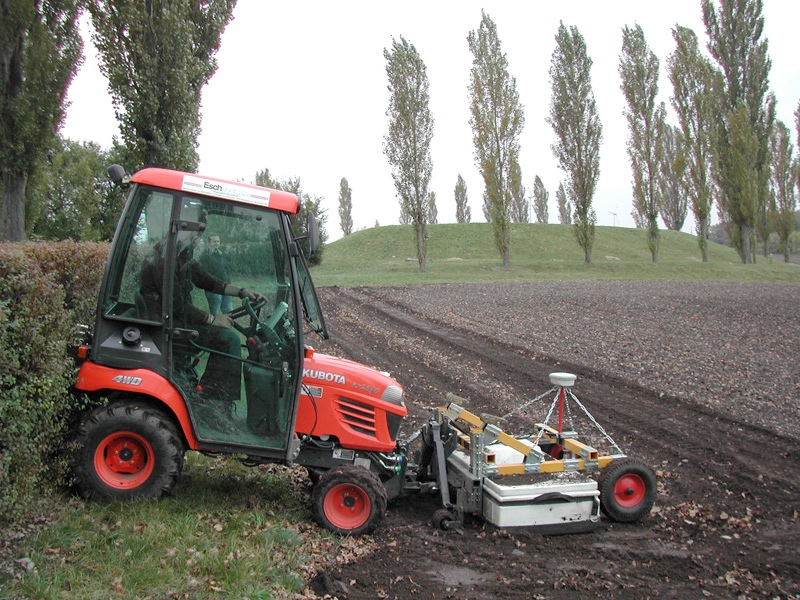
Geophysical measurement systems used in the detection of the gladiatorial school at Carnuntum: A) the MALA ̊ Imaging Radar Array (MIRA) with 16 × 400MHz channels spaced at 8cm. The RTK-GPS receiver is situated centrally above the GPR antenna box. The system is hydraulically mounted in front of a small tractor.
Archaeological interpretation
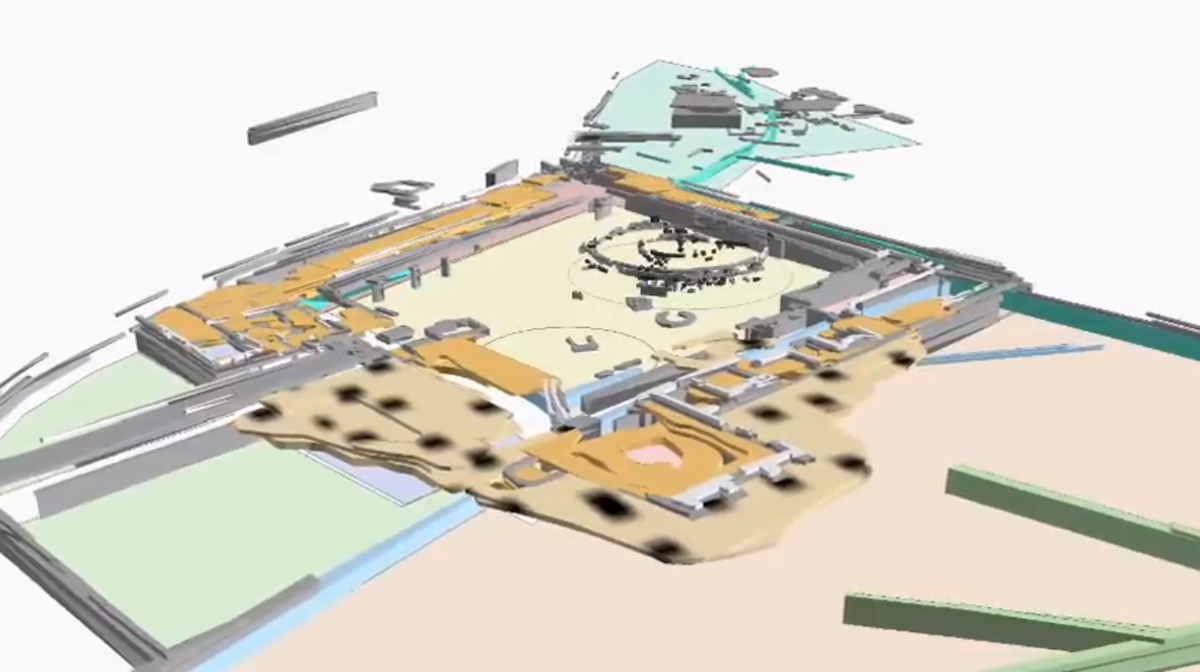
GIS-based archaeological interpretation map of the gladiatorial school at Carnuntum derived from the ground-penetrating radar and magnetic data combined with the topographic model derived from airborne laser scanning.
Virtual Reconstruction

A virtual reconstruction model of the school of gladiators at Carnuntum.
Get the world’s most fascinating discoveries delivered straight to your inbox.
Huge School

The newly discovered gladiator school, or ludus, shown here in a virtual reconstruction, covers 30,138 square feet (2,800 square meters), and the building complex is arranged around a central courtyard.
Setting Sun
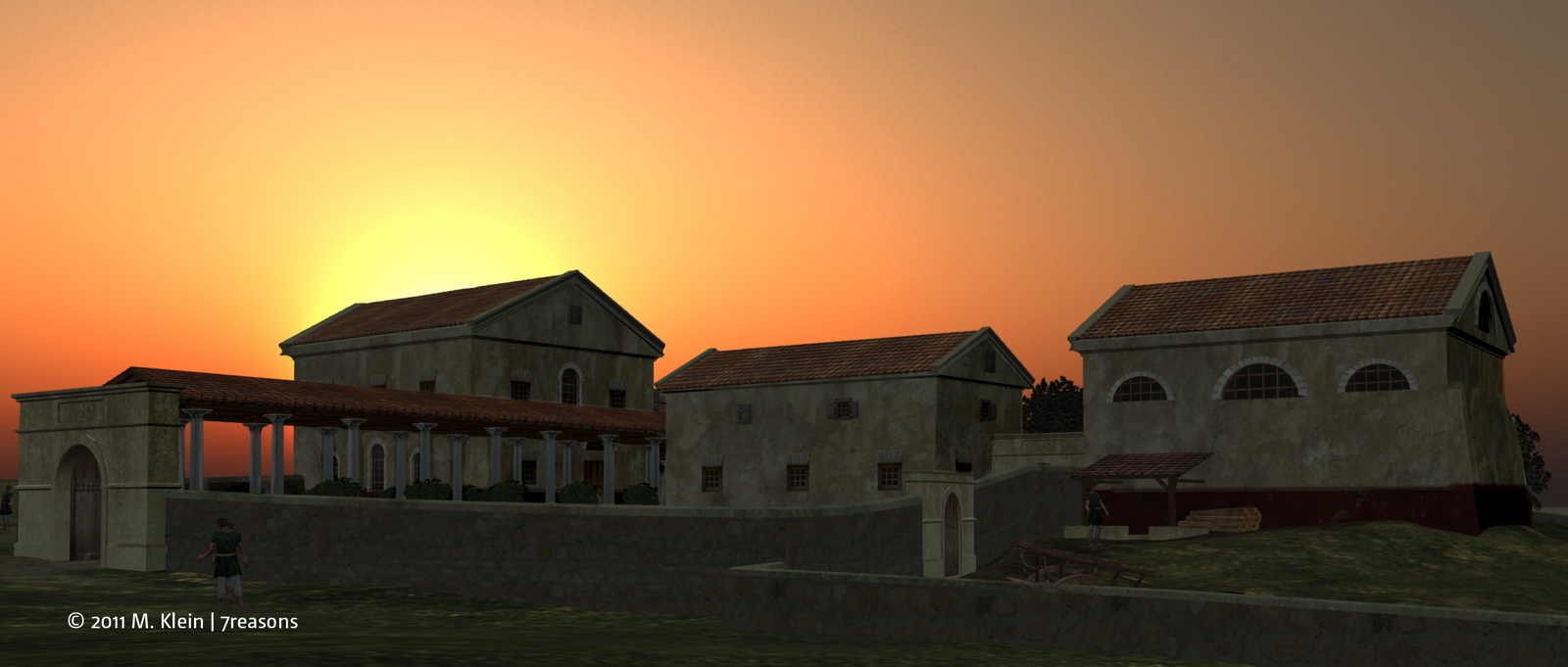
Here, a look at what the ludus, or gladiator school, would have looked like in the evening when active during the second century A.D.
The Basics
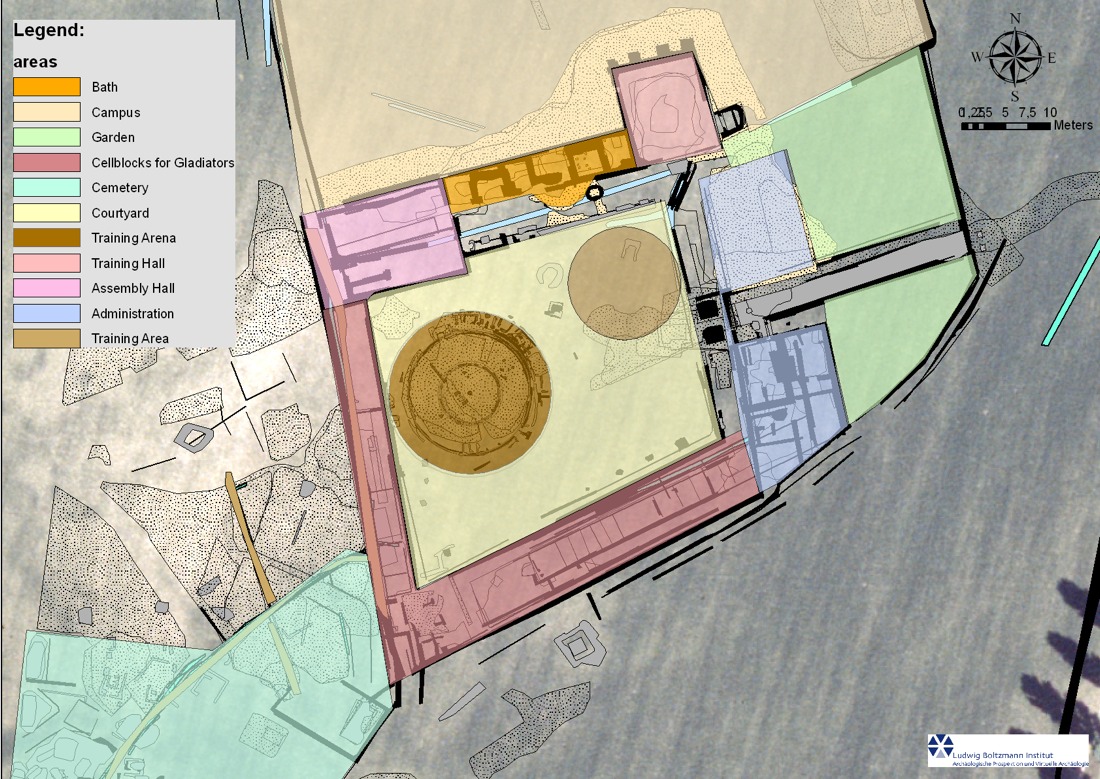
A three-dimensional visualization of the gladiator school complex derived from the ground-penetrating radar depth-slices.



